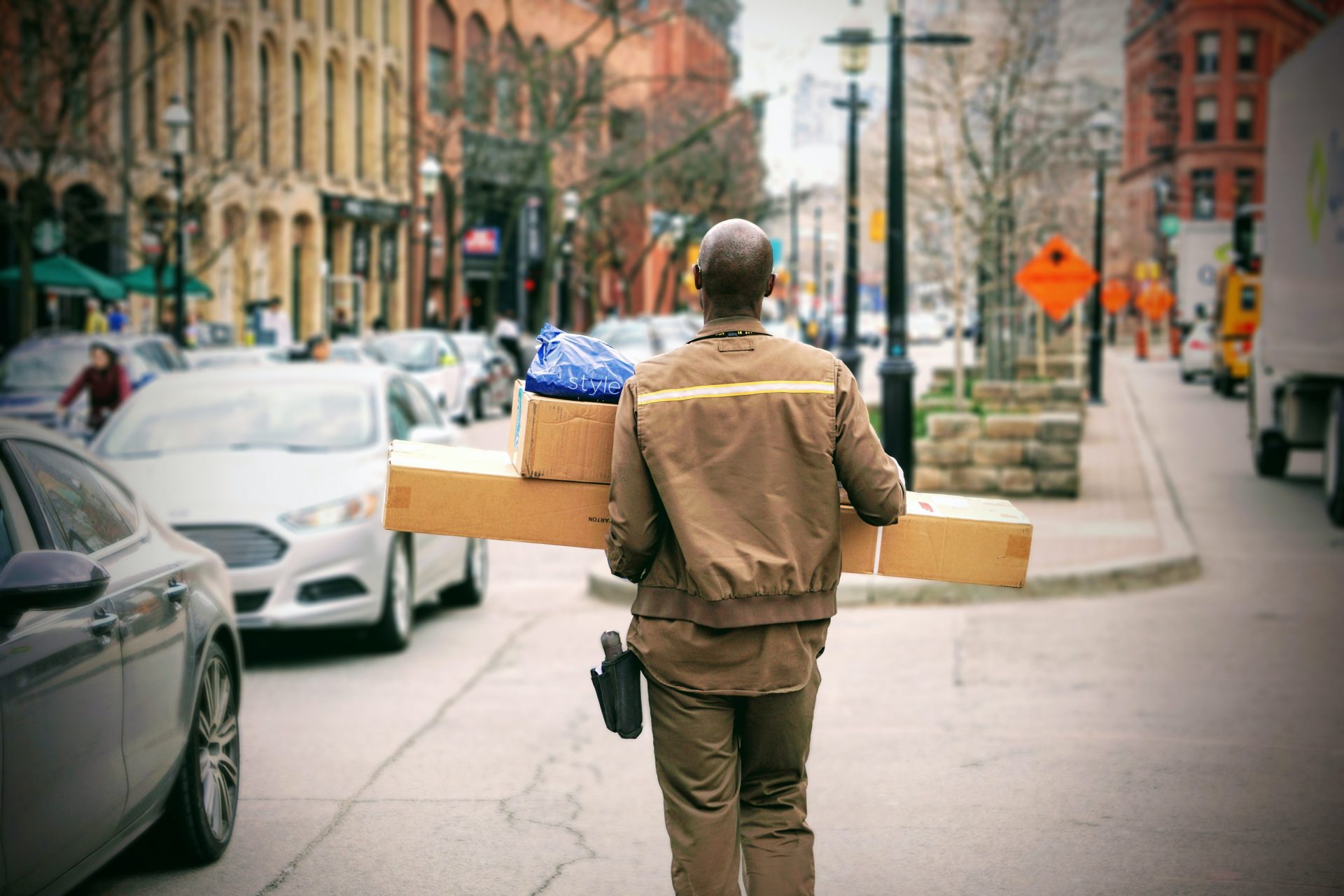Over the last decade, the demand for goods delivery has exploded.
Mobile delivery applications have made goods available at the tap of a screen, and transportation network companies (TNCs) have integrated deliveries into their platforms. Delivery brings new opportunities for municipalities to meet climate goals by optimizing and reducing car trips. Additionally, because delivery brings goods to people, instead of people having to travel to acquire goods, it enhances access and conveniences to goods, particularly for those individuals with mobility challenges such as individuals with disabilities and older adults. However, with this advance, there have been challenges related to the ability of those with mobility challenges to navigate sidewalks.
COVID-19 has triggered an explosive and rapid growth in demand for contactless delivery. Lyft is experimenting with delivering medical supplies delivering medical supplies, public transit agencies are partnering with food banks to use busses for food delivery, and the food industry is urging millions of Americans to stay at home and order in. Along with the emergence of dockless bikes and scooters in many cities, Amazon packages, hot meals and alcoholic beverages, and the vehicles that carry them have laid their claim to more street and curb space. Deliveries have created a new urgency to managing the curb so that people can move freely through the public way.
Increased Deliveries’ Impact on Mobility
The increase in deliveries has created an underlying threat to individuals with mobility challenges. Traditional wayfinding – such as mapping curb obstacles like garbage cans and newspaper stands, is no longer adequate in many metropolitan areas. People with mobility challenges, especially those who are blind, often have to continually learn a route and where these static obstacles may be.
In recent years, the challenge of wayfinding has been amplified by the emergence of dockless bikes and scooters (There are ways to make sure they aren’t placed problematically). These challenges are compounded by a rising demand for delivery, much of what is planned to be met by delivery robots.
Cities throughout the US have been testing and deploying delivery robots on their streets and sidewalks. In central Fairfax, Virginia, residents can order food and other goods to be delivered by robot via Starships Technologies. However, delivery robots have caused issues for people in wheelchairs, sometimes malfunctioning and blocking a sidewalk or curbcut. Many experts in the artificial intelligence (AI) field note that the technology is not yet ready for delivery robots to be fully autonomous .
With the demand for delivery increasing like never before, now is a perfect time for delivery robot companies and others working on AI to prioritize the implications of their technology for curbspace – especially for individuals with mobility challenges. Companies working to perfect AI can learn from the disability community to make a product that is safe for all curb and street users.
For years, people with mobility challenges have used wayfinding and other means to navigate city streets and sidewalks. When safety and considerations regarding wayfinding and navigation are prioritized in product development, it alleviates many concerns of users, people with mobility challenges, and decision makers in the jurisdictions of which these companies aspire to operate. As the delivery market and the competition grows, companies that minimize their product’s impact on paths of travel and value community input will be poised to lead.
Mobility managers can work closely with their local government to be involved in the permitting and policy process of promoting delivery robots and other AI improvements in their communities. Individuals with disabilities and seniors should be part of these early discussions. Delivery robots can be leveraged to meet the needs of people with mobility issues, to deliver essential goods to at-risk populations, and to minimize car trips.
To explore curb management more:


